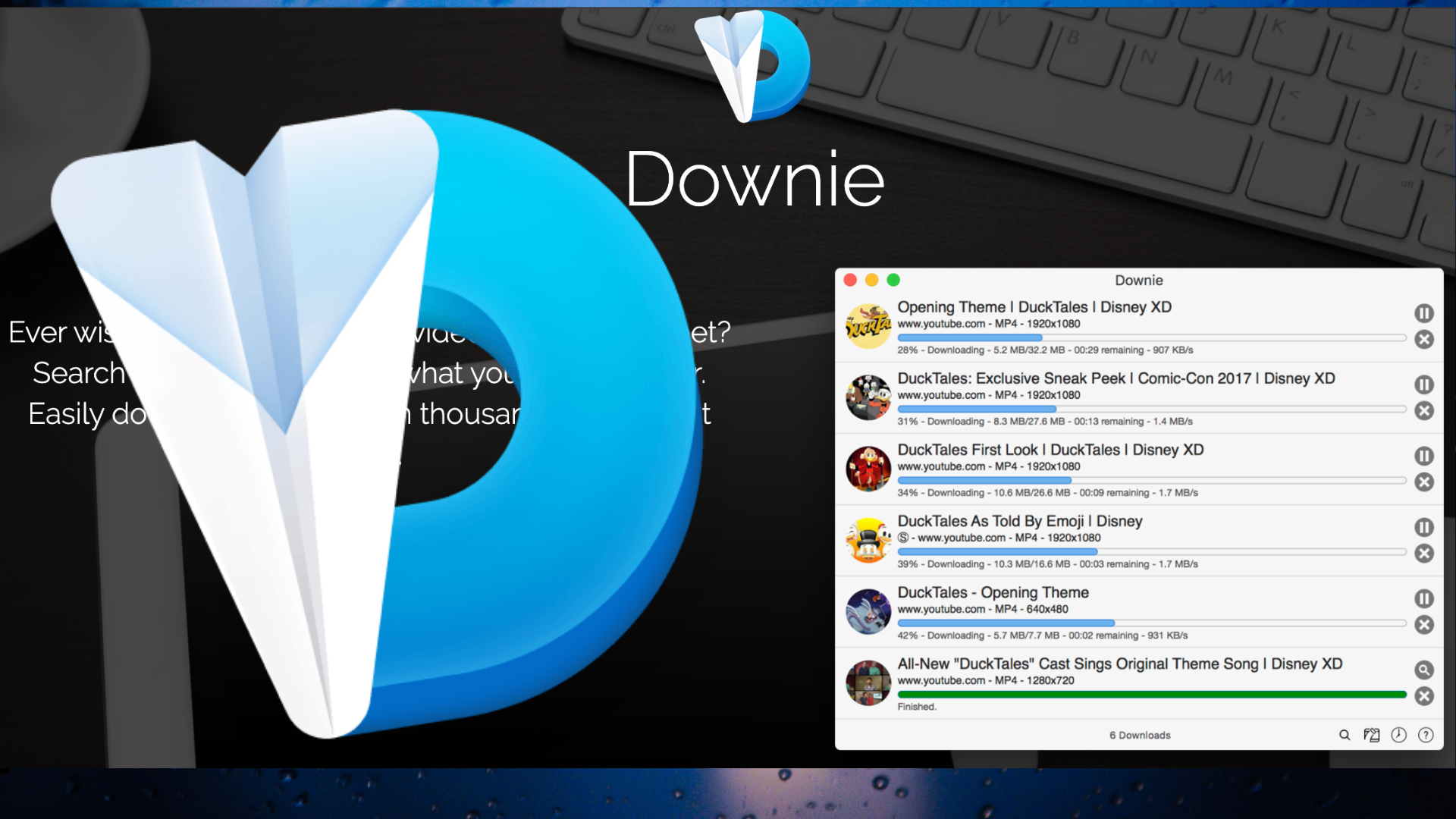

- #Downie for mac how to
- #Downie for mac Offline
- #Downie for mac tv
- #Downie for mac download
- #Downie for mac mac
#Downie for mac mac
If there is something in it, the Mac should be trying to take some “action” on it. I actually have two, one is ~/Action/ for things I want to do locally on my Mac, and the other is ~/Dropbox/Action/ for things that I want to do via Dropbox. I think I originally borrowed the idea of an “Action” folder from David. So ~/Dropbox/Action/downie-get.txt on my Mac becomes /Action/downie-get.txt for the purposes of this shortcut.ĭownie-Dropbox-YouTube.jpg 1242×2688 471 KB

Finally the file path is relative to ~/Dropbox/ on your Mac. Note the “Make New Line” which should ensure that every URL is on its own line in the text file. Worst-case scenario you will end up with a text file with a bunch of URLs that you need to process. In reality, that file won’t exist 99.99% of the time, but it might – for example, if the Mac has crashed, or one of the “pieces” on the Mac has failed to run properly. The URLs are “appended” to a file in Dropbox. I use this step because it would theoretically let me throw a big block of text with a bunch of URLs at the shortcut and have all of them parsed out properly, but in actual practice I use this to send one URL about 99% of the time. Will take URLs from the input the user has given us. A better shortcut would ask the user if they want to use the shortcut input or the clipboard right from the start.

This URL will not be expanded, which is a drawback. You can just tap on the alert and paste the clipboard into it. Tip: If what you really wanted to do was to save a video URL that you have on the clipboard, this is a good time to do that. The user is “Ask”-ed “Is this what you want to add?” This presents the “expanded” URL to the user before it is saved. This is not strictly necessary, but I want to save the actual URL rather than a bit.ly URL. The shortcut accepts anything (note: I should probably make this less “receptive” because in iOS 13 shortcuts appear in a lot of places they don’t always belong, but I’m not re-writing anything until iOS 13 officially ships.) Right away this is a big assumption because we are trusting the user to give us the correct kind of data (specifically, a URL).
#Downie for mac how to
I’ll include a screenshot because it might help some folks understand how to make it, but it’s about as simple as shortcuts get: That’s why I have the push notification in step #7, so I know when it’s safe to send another URL. If you run the shortcut twice in rapid succession, it’s possible that your second URL might get added to the text file in the split-second after it is processed and before it is deleted, and your URL would be lost. I make no attempt to determine whether or not the URL is actually a video URL or not.
#Downie for mac download
If you ask Downie to download something that isn’t a video, it probably won’t work right. In step #5, you could use youtube-dl instead of Downie. In step #3 you could use launchd or Hazel.
#Downie for mac Offline
I chose Dropbox because that was the easiest way for me to do it, and I know that even if my Mac is offline for some reason (which is almost never is) or if Dropbox isn’t running on my Mac (which it almost always is), this will still work. Heck, you could probably use Shortcuts’ built-in “Run SSH Command” to send the URL to a text file directly. If you use ShellFish you could probably use Shortcuts to save the file directly to your Mac via SFTP, rather than using any cloud storage at all. In step #2, you could use iCloud instead of Dropbox. I’m not going to describe the only way to do this, because there are lots of ways to do this. When the script is finished, it deletes the original text file and waits for it to be re-created.Ī push notification is sent to tell me the video has been downloaded Those URLs are passed to Downie which has been previously configured to save videos to a different Dropbox folder. Somewhere, a Mac notices that the file has been created/modified.Ī shell script is triggered which looks for URLs in the text file. The Shortcut saves the URL to a text file in Dropbox. On my iPhone or iPad, send a URL to a Shortcut.

I always like to explain the “concept” before I get into the nitty-gritty details of how it’s done. There has been approximately 4,371% more interest in this script than anything I have written on the Internet in the past 20 years, so I thought I should publish it somewhere I can point people to.
#Downie for mac tv
On Mac Power Users #493 I made an off-hand reference to a script-and-shortcut that I use to save YouTube videos from my iOS device into a Dropbox folder that I later view on my Apple TV using Infuse.


 0 kommentar(er)
0 kommentar(er)
